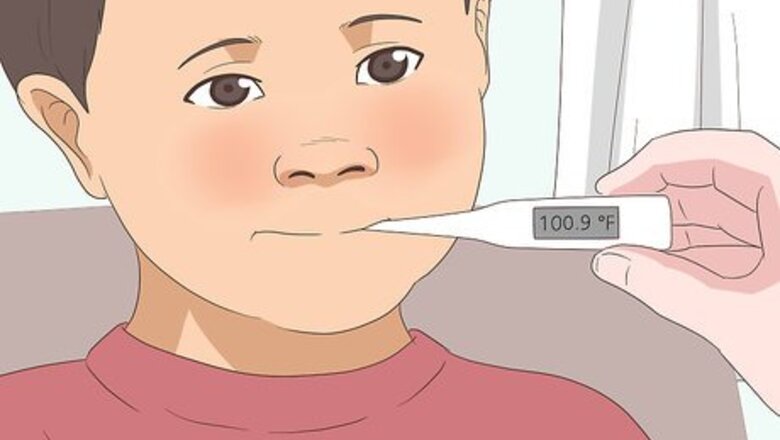
views
X
Research source
Reducing Fever in a Toddler
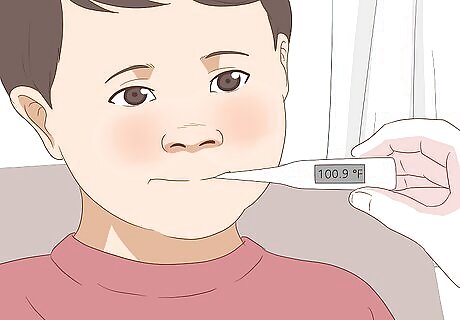
Assess your toddler's fever. Take your toddler's temperature using a digital thermometer. You get the most accurate reading by taking it rectally, but you can also take it under the armpit (however this is the least accurate measure). Never mix-and-match using the same thermometer. You can also take a toddler's temperature on the forehead with a temporal artery scanner and with an in-ear thermometer. Babies and toddlers tend to have higher body temperatures and a greater range of body temperature variation than adults. This is partly because of their bodies’ greater surface-area-to-volume ratio and partly because their immune systems are still developing. Normal body temperature for a toddler is 97 to 99 degrees Fahrenheit (36 - 37.2 degrees Celsius). A low-grade fever in toddlers is in the 99 to 100.9° F (37.3 - 38.3° C) range. A temperature of 101° F through 103.5° F (38.4 - 39.7° C) usually indicates illness that needs monitoring. Most fevers in this range are caused by viruses or a minor infection. A temperature of over 103.6° F (39.8°C) should be treated or lowered (see next steps). If the fever goes down using the methods described in the next section, the doctor’s visit can often wait until the morning. If not, you should take your toddler to the ER immediately Please note: this article discusses fever as a sole symptom. If there are other worrisome symptoms or if the child has a chronic condition that might be of concern, seek medical attention immediately.
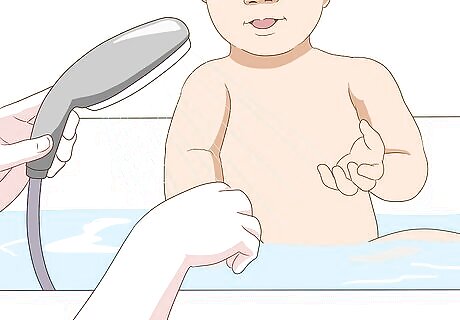
Give your toddler a bath. Because water moves heat away from the body faster than air does, a bath is an effective method to reduce fever and works faster than medications. You can also use a bath to reduce fever while you are waiting for acetaminophen (Tylenol) or another pain-reliever/fever-reducer to kick in. Use lukewarm water. Never use cold water to reduce fever. Water temperature that is a little less than the body temperature provides the quickest fever reduction. Avoid using rubbing alcohol in the bath water--that is an old recommendation and no longer encouraged by health care providers. You can also place a cool and damp washcloth over your toddler's forehead or body to reduce fever.
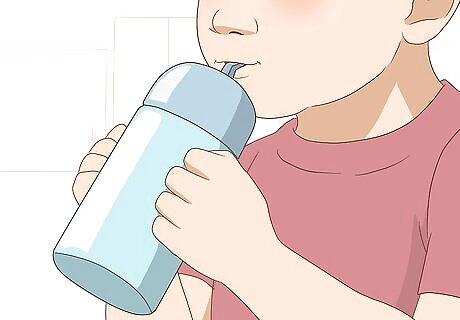
Encourage your toddler to drink plenty of fluids. Fever can lead to dehydration, which can be a serious medical condition, and thus, it is essential you offer your child plenty of fluids to keep them hydrated. Pure water is always the best choice but other options also work if your child is picky. Offer your child fruit juices diluted with water or water flavored with fresh fruits. You can also offer iced, non-caffeinated herbal teas (such as chamomile and peppermint) or electrolyte solutions such as Pedialyte, which can be offered to children at any age. Be vigilant and watch for signs of dehydration. The higher the fever is the higher the risk of dehydration becomes. Signs of dehydration include concentrated urine, which is darker yellow and perhaps strong smelling, infrequent urination (6+ hours between wettings), dry mouth and lips, absence of tears when crying, and sunken eyes. If your toddler shows signs of dehydration, seek medical attention.
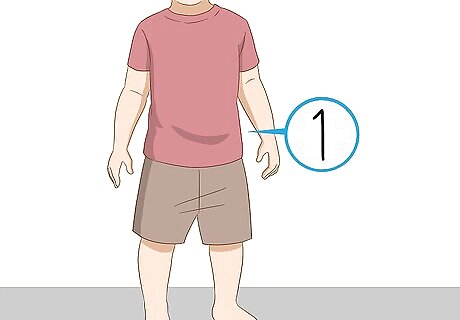
Optimize skin temperature and room temperature. Dress the child in one lightweight layer of clothing for optimal thermal control. Each layer of clothing traps more heat next to the body. Loose and thin clothes allow air to circulate more freely. Keep a thin blanket close by if your child feels cool or complains about being cold. A mechanical or electric fan moves the air more quickly and can help in taking heat away from the skin. If you do use a fan, monitor your toddler constantly to avoid too much cooling. Don't aim the fan directly at your child.

Give your toddler a fever-reducing medication. Medicating fever is something you should do only when needed to make the child more comfortable or to bring down a high fever that can cause serious complications. Low to mild fever is usually best left untreated unless other complications exist, whereas moderate to high fever, or fever associated with other symptoms, can and often should be treated with fever-reducing medications. Acetaminophen (such as Tylenol) or paracetamol can be given to infants and toddlers. Consult your doctor on the correct dosing. Ibuprofen (such as Advil and Motrin) can be given to children 6 months or older. Consult your doctor on the correct dosing. Aspirin is no longer recommended for any child under the age of 18 years due to its association with Reye’s syndrome. Fever-reducing medications are available in suppository and liquid forms for children. Administer the appropriate amount, which is determined based on the age and weight of the child. Never exceed the recommended dose or dosing interval. Keep a record of times and amounts of medications you give to your child. If your child is taking prescription medications, please check with his or her doctor before using any over-the-counter fever reducers for toddlers. If your toddler is vomiting and unable to keep down the medicines, you might consider using acetaminophen suppositories. Check the label for proper dosing. If the fever-reducing medication does not lower fever temporarily, seek medical attention.

Ask your doctor if your child needs antibiotics. Antibiotics are used for bacterial infections and cannot be used to treat viral infections. High and unnecessary use of antibiotics has provoked bacteria into evolving resistance. Due to this, the current recommendation is to use antibiotics as conservatively as possible. If your child does take antibiotics, make sure they finish the entire prescription.
Understanding Fever in Toddlers
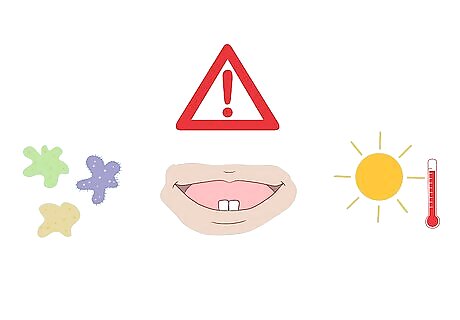
Understand what causes fever. To a certain degree, fever is our friend. It is our body's natural response to a wide range of causes, including the following: Bacterial infections, such as streptococcal bacteria that cause strep throat or ear infection, can cause fever and are often treated with antibiotic therapy. Viral infections such as cold, flu, and other typical childhood illnesses (chickenpox and measles). Viral infections cannot be treated with antibiotics and often the only means of treatment are waiting it out and treating the symptoms. Viral infections are the most common cause of a fever in a toddler, and fevers can often last 3-4 days. Teething often produces low-grade fever. Immunizations are developed to generate a mild immune response and thus can often result in low-grade fever. A fever can occur if your child is overheated due to being in a hot environment and has heat exhaustion or heat stroke. This is a medical emergency. Rarely, fever can be caused by an inflammatory condition such as arthritis or by other serious medical conditions, including some cancers.
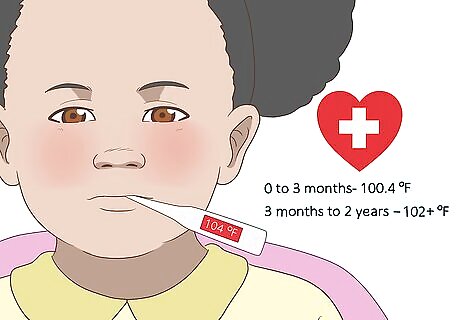
Know when to call your doctor. Monitoring your toddler’s fever is a bit of a balancing act—you don't want to overreact but you don't want to underestimate the situation either. Generally the younger the child is the more serious the matter is. There are some general guidelines based on your child’s age: 0-3 months: fever of 100.4 F (38 C) is the point at which you should call the doctor right away, even if no other symptoms are present. Any baby under 2 months will need to be seen right away. 3 months to 2 years: fever below 102 F (38.9 C) can normally be dealt at home (see previous section). 3 months to 2 years: fever above 102 F (38.9 C) may need medical treatment. Call your child’s pediatrician for further directions. This is especially important if there are other symptoms, if the fever does not responded to medication, or if it continues for more than a day or two.
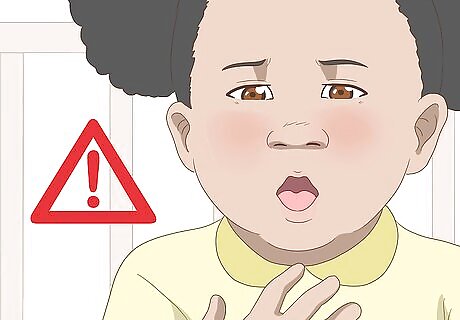
Recognize the signs of other serious symptoms. Parents often have some intuition about the seriousness of a child's medical situation. Also children develop patterns in their responses to illnesses, and parents are often quick to notice anomalies. Fever accompanied by lethargy and/or listlessness may be signs of something more serious. If your toddler has serious symptoms such as disorientation, bluish color around the mouth or fingertips, seizure, severe headache, stiff neck, difficulty walking, or difficulty breathing, call 911 immediately!



















Comments
0 comment